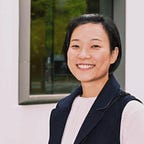After 3 months of visual design principles training at UC Berkeley Extension, I’ve gained knowledge and experience in creating graphic forms with purpose to achieve desired outcomes. I enjoyed every step of the journey, especially learning about the evolution of graphic design as a practice and as an industry. Here is a brief summary of what I’ve learned and created.
Points, lines, and planes. A point may not catch your attention immediately, but the art of placing points based on the Gestalt principles can be very powerful. Gestalt principles explain how humans typically gain meaningful perceptions from chaotic stimuli around them. The 6 Gestalt principles are Figure-ground, Proximity, Similarity, Continuity, Closure, and Connectedness.
Principles of Design: Unity, balance, rhythm, emphasis, contrast, repetition, harmony, variety, alignment, and movement.
“Chiaroscuro”, in art, is the use of strong contrasts between light and dark, usually bold contrasts affecting a whole composition [1].
Graphic design history: before the avant-garde movements, the Enlightenment’s democratization of knowledge and proliferation of printed matter stimulated the graphic effects of industrialization. The avant-garde are people or works that are experimental, radical, or unorthodox with respect to art, culture, or society. It may offer a critique of the relationship between producer and consumer. [2]
Using alternative techniques for creating point and line, such as texture.
Graphic design history: Jessica Helfand and John Maeda’s “Dematerialization of Screen Space.” paved the new way in thinking about graphic design in digital age. The birth of Modernism and Constructivism after avant-garde. The need for graphic design from US corporations pushed graphic design to develop further as an industry. Related readings include Paul Rand’s “Good Design is Goodwill.” and Kalle Lasn’s “1600-1886: The Birth of the Corporate ‘I.’”
Graphic design history: Postmodernism and semiotics Expressive form: Signs, symbols, icons, logos, and logotypes. After examining works of renowned designers, we started experimenting with poster and logo design for a fictional museum. The process looks like this: Step 1: Key attributes (five descriptors); Step 2: Naming (15 options); Step 3: Mood boards (one image per attribute); Step 4: Design a logo (50 sketches).
Poster design for the museum exhibition. The goal is to combine the previous principles in creating a visually impactful poster that triggers interests of your potential audience.
After rounds of iterations and group critique sessions, I decided on the final version of the logo for “The Reality Lab”. 3 color arrows forming a vague “RL”.
We went on to create a stationary set including letterhead, business card, envelope. The last part of the course is creating an interactive website for the museum.
I enjoyed the entire journey of this course, it changed my understanding of the field of graphic design and my approach of creating visual elements in my designs.
